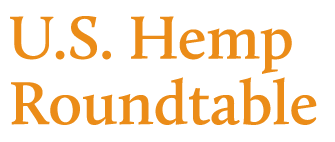Latest
What are Single, Dual, and Tri Crops?
PanXchange Blog
Like many crops before it, hemp can be bred and cultivated to optimize a single primary application; fiber, grain, or CBD. Unlike the crops before it, however, hemp has had problems with stigma, and years of prohibition which prevented applications from being developed sooner. This lack of global use and infrastructure has resulted in highly specialized genetics in terms of application and growing regions. Now, our industry must adapt to keep up with the changing technology and infrastructure.
Single Crop
When referring to hemp, a single crop is a plant that is used for one product application. This would be the cultivation of a hemp plant for fiber, grain, or CBD but not intentionally for more than one product.
The benefit of a single crop is that the yield will be maximized for ideally the most profitable application. The single crop style of production allows breeding for a specific purpose. This means there is concentrated research and development towards efficiency in that one, specialized product.
A single crop limits the farmer to one plant and product, putting all faith into a single yield and that single market condition. Single-purpose crops are extremely risky without a mature and reliable market, as we witnessed in the cannabinoid industry from 2019 to 2020, due to the massive oversupply and subsequent fall in prices.
An underdeveloped market means there are more complications with raising a hemp plant for a single-use. Right now, it is most commonly used for CBD but as industrial applications develop this will change, and quickly.
Dual-Crop
Much like the name implies, a dual hemp crop will have two applications. Fiber and grain, grain and CBD, or Fiber and CBD. This type of farming practice will provide multiple revenue streams and take advantage of what the plant has to offer in different ways.
A dual-crop offers a variety of benefits but most notably a farmer could harvest CBD while still maintaining a source of fiber or grain. This is useful for research and development purposes until hemp can be utilized for industrial applications. Using dual-crop leaves the opportunity to lean into whichever product is doing best in terms of yield or market prices. This flexibility offers security in case prices are low for grain or fiber and the flexibility to take advantage of opportunities in multiple markets.
Dual-crop is not a perfect solution; there will always be give-and-take within its results. Hemp grain, fiber, and CBD are ready at different points in the plant’s natural life cycle, which will affect the yield as one aspect of the plant will inevitably be harvested too early or late than if it were a single-use crop. In the United States, we have not yet established practices, genetics, or acreage to reliably source fiber and grain, unlike the European hemp industry, which illustrates it can be done. CBD dominates most of the United States’s hemp industry and will continue to do so until genetics and practices are refined.
Tri-Crop
Following the appropriately named dual-crop, is the tri-crop, which is purposed for fiber, grain, and CBD, all sourced from the same plant. The long-term purpose is to be able to produce all demanded products from a single variety and provide optionality for processors and growers.
The tri-crop is ideal as the market matures allowing for flexibility. Like the dual-crop practice, tri-cropping would allow for the research and development of genetics and practices to create the best all-purpose plant.
A key advantage for the tri-crop would be the producer’s ability to be more flexible in taking advantage of the value of the entire plant, especially in their local economy. If a farmer is prepared to source grain, fiber, and CBD in one place, this could cut down on waste and overall environmental impact as well.
For now, varieties and practices are inconsistent. Current cultivation practices are not refined enough to limit the inverse relationship between fiber, grain, and cannabinoid yield and quality. Hemp seed and genetics companies like New West Genetics are working on breeding specifically for multi-cropping. Hemp Grower Magazine discusses what the ideal plant would look like; “a hemp crop that maintains the quality of fiber while the seeds mature.” This type of hemp would need to be bred to be monecious (having both male and female flowers on the same plant).
There will always be some amount of loss depending on how the crop is cultivated and harvested, but this may be perfect for the volatility across the current hemp market and best suited for the development of local economies.
Tri-crop has a lot of potential and could be the future of hemp. We must improve upon genetics to limit give and take relationships in hemp product production. It is unclear which variety will take the lead, but there will absolutely be a need for all of them as the hemp industry expands.






